As discussed in our previous analysis of rondos, these small-sided possession games can offer a great deal of tactical and coaching flexibility within them. Originating from Barcelona’s La Masia and used at Manchester City and Bayern Munich by Pep Guardiola, the rondo has become a go-to exercise by coaches throughout the world.
This tactical analysis shows there are numerous ways in which the rondo can be utilised. This tactical theory will provide an analysis of rondos designed to work on specific units on the pitch – forwards, midfielders, and defenders.
Pressing with two forwards, rondo
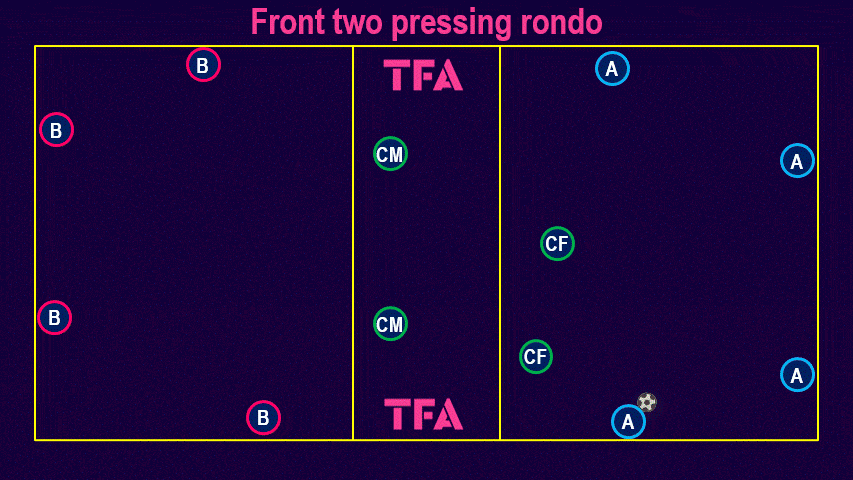
This rondo is designed to mimic two forwards pressing a back four together with two midfielders making screening movements behind them. The area is split into three zones with two equal-sized boxes on either end of a narrow rectangle zone. Three teams of four are created, with two in-possession teams occupying the end boxes and a defending team in the middle.
The aim of the in-possession teams is to connect a pre-determined number of passes in their own zone. They then transfer the ball, on the ground, to the opposite box. Points are scored negatively against the defending team, every time the ball is switched from one box to another. The in-possession teams should be set up modelling a back four in a condensed area (size can be adapted depending on the level of the players).
Teams can either remain defending for a set period or transition should they win the ball back. Should the defending team transitioning be preferred, they should switch the ball out of the box and allow the other, now defending team, to transfer to the opposite box. If they manage to intercept the ball without keeping possession of it (i.e. knocking it out of play) on two occasions, they can also transition.
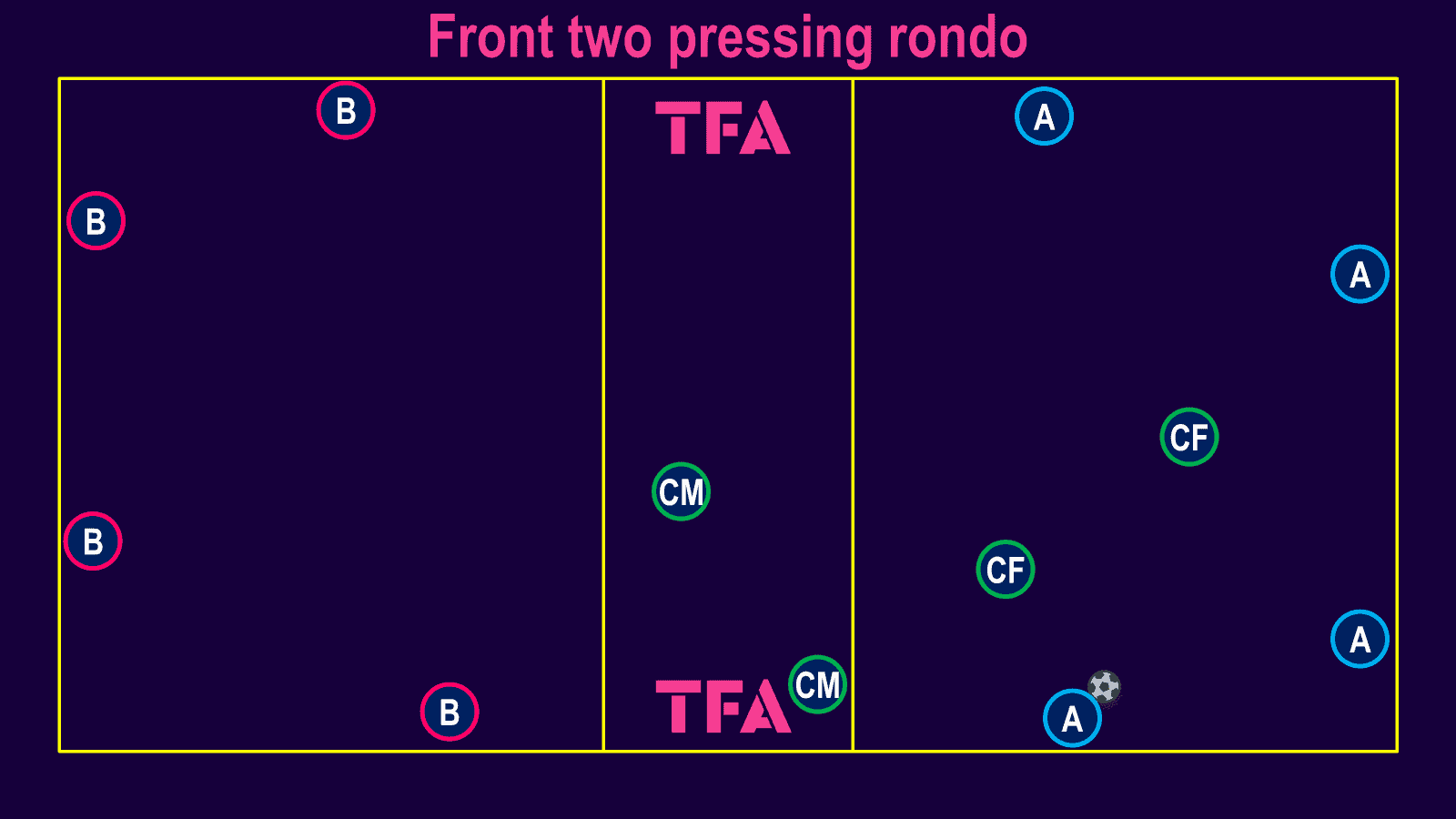
Midfield unit rondo
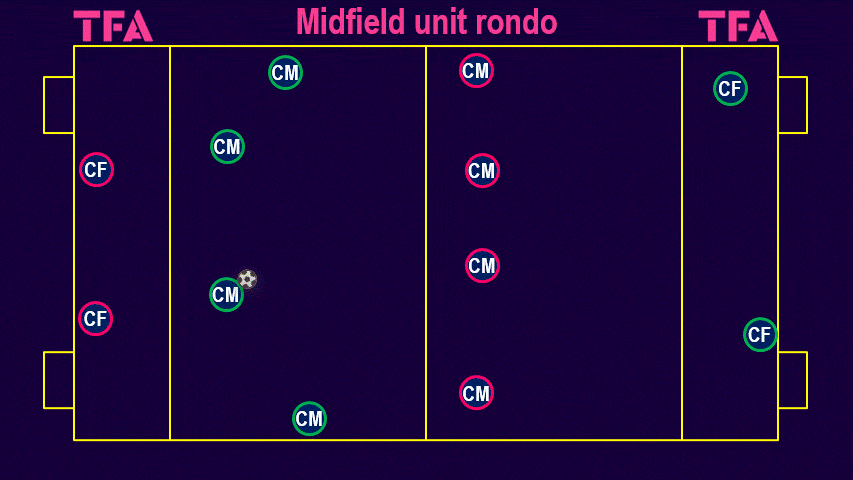
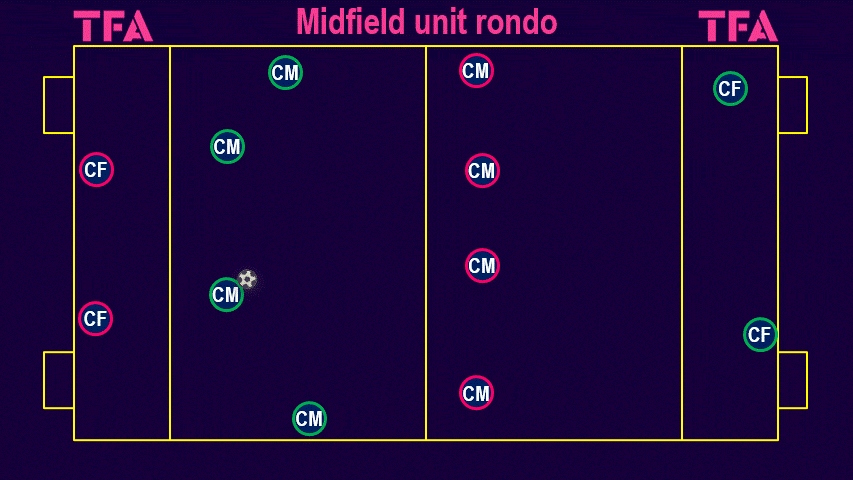
The focus of the defending team should be to shift laterally and stagger their positioning. If done correctly, this will prevent any passes from being played between them. The ball-near player should step towards the ball, when able to securely do so, with the players beside him dropping off. This allows them to cover a lot more width whilst not allowing balls to be played between them than they could if in the same horizontal line. The key is to promote patience and synchronisation. Every player is involved in the defensive structure, and any player acting alone or not doing their assigned job will cause gaps to appear.
This rondo can be progressed by allowing certain players to move between different zones. One forward can be allowed to press to add complication to the build-up. One midfielder can also step into the opposition’s midfield zone to press. This adds to the defensive decision-making element of when the correct time to commit to the ball is.
This can be adapted to work on the back four defending as a unit. In that instance, the players should be encouraged to shift laterally and step up together as a unit. The difference from working with midfielders is the offside line.
Back four and midfielders in the build-up
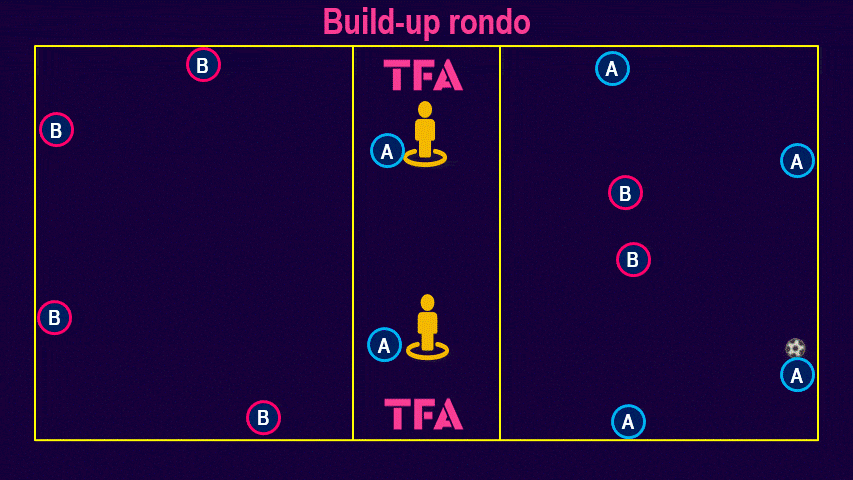
In the in-possession phase, this rondo is designed to work on build-up play, specifically with midfielders. Both teams have a back four and two midfielders. The in-possession midfielders position themselves behind mannequins in a central zone. The goal is for the in-possession team to connect with one of their midfielders before transferring the ball to the opposite box.
The aim for the midfielders to show for the ball, moving from behind the line of mannequins at the very last moment. In a real game, this quick burst from their direct opponents blindside would make it hard for opposing midfielders to pick them up. To encourage the midfielders to play the way they are facing, initially at least, the ball must be bounced back into the original square before being played forward by one of the back four. This also encourages players to support underneath the ball.
When the ball gets switched, the midfielders then become the two pressing players. This mimics both supporting the play after a forward pass and counter-pressing when possession is lost.
This rondo can be progressed by adding a “live” defending player (or players) to the middle zone. This makes progressing the ball more difficult and adds to the players’ decision-making. The “midfielders” can then be allowed to turn with the ball themselves if the defending player jumps to intercept.
Conclusion
The secret to rondos is in their simplicity, and they should not be overcomplicated. Rondo’s have evolved greatly over the previous few years and are no longer just a lighthearted way to begin a practice. They have become an efficient way of reducing tactical concepts to coachable games. They are easily manipulatable for coaches to achieve their desired tactics aims.






Comments